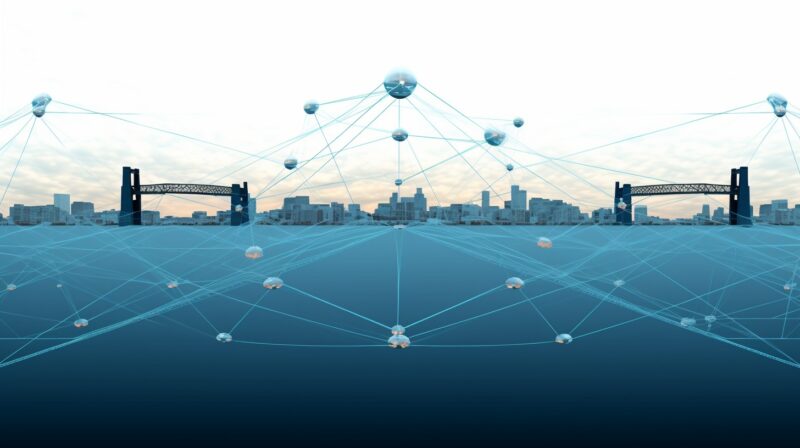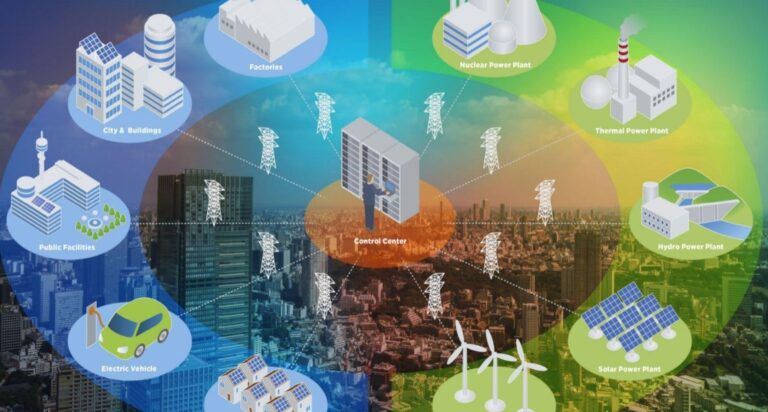The process of delivering data from one point in a network to another is often taken for granted by many businesses, but the details involved can be incredibly important, especially when it comes to data center infrastructure. A poorly optimized network can result in congested traffic due to bandwidth limitations and sluggish performance owing to high levels of latency.
When it comes to network design, MPLS and VPLS are two popular choices for IT engineers. Although these abbreviations sound very similar, they actually mean very different things. Here’s a brief overview of the difference between MPLS and VPLS and how they can impact a company’s network performance.
How Does MPLS Work?
Multiprotocol label switching (MPLS) is a form of communication used at the network level (Layer 3) of network computing infrastructure. It helps deliver data packets to their destinations using the most efficient routes possible. In a typical network, data packets are routed according to the information contained in a series of tables within the packet.
The entries in these tables are often long and complex. In order for a router to deliver a data packet to the next location on the journey to its eventual destination, it must read through these tables and identify what the next stop should be. This process occurs relatively quickly to the human observer, but in relative terms it can introduce significant delays into data transfer speeds, resulting in noticeable latency for users.
With MPLS, the optimal path through a network is predetermined and communicated with specific labels. Each packet is stamped with a label that clearly indicates where it needs to go next. Specialized Label Switch Routers (LSRs) place labels on each packet that passes through them so the next router will know where to send it. Since the routers don’t have to read through lengthy tables to figure out where to send a packet, MPLS can improve network efficiency and speed.
There is another important benefit to having LSRs label packets. When data traffic is congested, the predetermined path of a data packet might not be the most efficient at that moment. MPLS connections can be used to prioritize traffic, labeling some data as more essential and ensuring that it gets routed through the network more quickly.
IT engineers can also design MPLS network systems to identify secondary paths for data packets in the event that the primary path is disrupted in any way.
How Does VPLS Work?
Virtual private LAN service (VPLS) operates on different principles and addresses different needs than MPLS. Based in the data link layer (Layer 2) of a computer network model, a VPLS solution is an Ethernet-based point-to-multipoint virtual private network (VPN) that connects multiple geographically dispersed local area network (LAN) sites, which functionally makes them all appear to be in the same LAN.
Effectively, this allows data packets to be delivered over the internet using internal routing protocols rather than relying on their service provider to handle routing. When data originates from a device, it first travels to an edge router or switch that sends it to a service provider’s router.
Instead of being shunted through a variety of connections to reach its destination, the data is immediately sent to another router within the virtual LAN using MPLS. The pathways carrying VPLS network traffic are often called pseudowires because they provide a fast, direct connection similar to physical layer connections. Once the data packet reaches its destination router, it can then be directed through the local network quickly and efficiently.
VPLS vs MPLS
Both VPLS and MPLS provide a method for making low-latency connections between remote locations. The differences between VPLS and MPLS are still important to remember. Since VPLS networks utilize the principles of MPLS solutions, it’s not entirely accurate to view them as an “either/or” choice. Many organizations implement MPLS since it can be scaled easily, is protocol-agnostic, and is capable of handling different kinds of traffic.
VPLS solutions are more difficult to implement, but they also provide better performance, faster speeds, and better security. Since it relies on labeling to send data from one customer router to another via a single ISP switch, the information contained in the packet (such as IP addresses or routing paths) is never made available to the service provider. With VPLS, organizations retain full control over how data is routed through their networks.
As VPLS solutions become less expensive to put into place, many industries are incorporating them into their network architecture to enhance existing MPLS strategies. This is especially important for data center infrastructure, which greatly benefits from strategies that minimize latency and provide tenants with better security. With the connectivity options available in a carrier-neutral colocation facility, building high-performance VPLS solutions can help them to enhance services for their customers.
Use Cases:

MPLS Use Cases
MPLS (Multiprotocol Label Switching) finds practical applications in various scenarios:
- Connecting Branch Offices: One of the most common use cases for MPLS is interconnecting branch offices within a Wide Area Network (WAN). MPLS provides a reliable and low-latency network connection, ensuring that remote offices can seamlessly communicate with the central office and each other.
- Prioritizing Real-Time Traffic: MPLS allows for Quality of Service (QoS) configuration, making it ideal for industries that rely on real-time data transmission, such as VoIP (Voice over IP) and video conferencing. MPLS can prioritize these critical applications, ensuring minimal latency and packet loss.
- Enhancing Cloud Connectivity: MPLS can be leveraged to connect organizations to cloud service providers, offering a dedicated and secure path for accessing cloud resources. This is valuable for businesses adopting cloud-based applications and services.
VPLS Use Cases
VPLS (Virtual Private LAN Service) serves different purposes, primarily in scenarios where Layer 2 connectivity is essential:
- Creating Virtual LANs (VLANs): VPLS is well-suited for organizations that need to create virtual LANs that span multiple geographical locations. It allows different LAN segments to appear as though they are part of a single LAN, simplifying network management and enabling seamless communication between dispersed offices.
- Data Center Interconnection: VPLS is often used to interconnect data centers. It enables efficient data transfer between data centers while maintaining Layer 2 connectivity, which is crucial for applications requiring low-latency communication and high availability.
- Isolating Network Traffic: In cases where isolation of network traffic is vital, VPLS offers a level of security by keeping traffic within the virtual LAN. This is advantageous in industries like finance or healthcare, where data segmentation and compliance are critical.
Scalability
Scalability is a key advantage of MPLS:
- Incremental Growth: MPLS networks can easily scale to accommodate growing network requirements without causing significant disruptions to existing operations. Organizations can add new sites or increase bandwidth as needed, making MPLS a flexible choice for businesses with dynamic network needs.
- Traffic Engineering: MPLS supports traffic engineering mechanisms that enable precise control over network resources. This means that as network demands evolve, businesses can efficiently allocate resources to optimize traffic flow without the need for major infrastructure changes.
- Service Provider Assistance: MPLS networks often involve service providers who can help manage the scaling process. They have the expertise to adjust configurations and provision additional resources, ensuring a smooth expansion process.

Network Security
Network security is a paramount concern for MPLS and VPLS:
- MPLS Security: MPLS inherently provides security through its label-based routing. By using labels, MPLS separates customer traffic within the provider’s network, reducing the risk of unauthorized access. However, additional security measures, such as encryption, are advisable for sensitive data.
- VPLS Security: VPLS offers enhanced security by allowing organizations to maintain control over routing and traffic separation. Since sensitive routing information remains within the organization’s network, there is a reduced risk of exposure to external threats or unauthorized access.
- Compliance Requirements: In industries with strict security and compliance requirements, such as finance and healthcare, both MPLS and VPLS can be configured to meet these standards. Encryption, access controls, and auditing can be applied to ensure data integrity and compliance with regulatory mandates.
FAQ
What are some common industries that benefit from MPLS and VPLS solutions?
MPLS and VPLS solutions find applications in various industries, including finance, healthcare, manufacturing, and retail. They are particularly useful for organizations with geographically dispersed locations and a need for reliable, low-latency communication.
Can MPLS and VPLS coexist in the same network infrastructure?
Yes, MPLS and VPLS can coexist within a network. Some organizations implement MPLS for connecting their branch offices while using VPLS to create secure, high-performance virtual LANs within their data centers.
What role does Quality of Service (QoS) play in MPLS and VPLS networks?
QoS mechanisms can be employed in MPLS and VPLS networks to prioritize certain types of traffic, ensuring that critical applications receive higher bandwidth and lower latency, which is crucial for maintaining optimal performance.
How do MPLS and VPLS contribute to disaster recovery and business continuity strategies?
Both MPLS and VPLS can enhance disaster recovery and business continuity by offering redundancy and failover options. Organizations can reroute traffic efficiently in case of network disruptions or disasters.
Are there any emerging technologies that might impact the future of MPLS and VPLS networks?
Emerging technologies like SD-WAN (Software-Defined Wide Area Network) and cloud-native networking are shaping the future of MPLS and VPLS networks. These technologies provide flexibility and agility in network management.
Final Words:
In the ever-evolving landscape of networking technologies, understanding the distinctions between MPLS and VPLS is crucial for businesses seeking to optimize their network infrastructure. Whether you prioritize scalability, security, or performance, these solutions offer unique advantages that can shape the way your organization connects and communicates.
By staying informed about industry trends and considering the specific needs of your business, you can make informed decisions that drive efficiency and success in the digital age.








